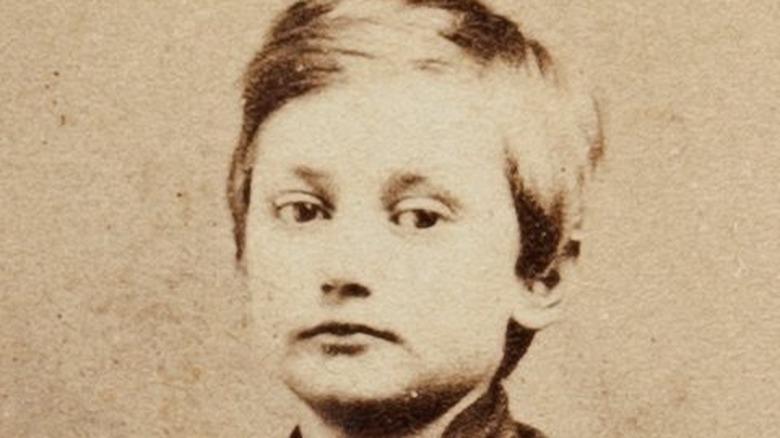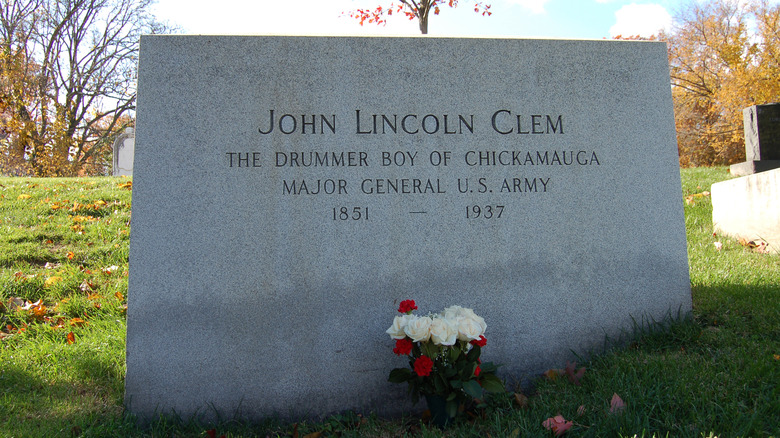The Truth About The 12-Year-Old Who Took Part In The Civil War
The American Civil War drew many to its cause, particularly when President Abraham Lincoln called for men to volunteer for the Union Army to help defeat the pro-slavery Confederate forces (via American Battlefield Trust). Among the many volunteers who were ready to give three years of their lives to the army was John Clem, an Ohio native who tried to join at the age of just 9 years old.
Denied by the newly formed 3rd Ohio Regiment, Clem turned to the 22nd Michigan, where his persistence won over officers. They adopted him as an unofficial drummer boy and paid his monthly salary out of their own pockets for a couple of years until the pre-teen soldier was allowed to enlist in 1863. What exactly follows next is somewhat blurred by his status as a folk hero for the Yankees. Although his exploits may have been exaggerated by legends and tall tales, the boy definitely saw combat during his term with the Union Army, and by all accounts performed with bravery beyond his 12 years.
Clem distinguished himself at Chickamauga
According to Mental Floss, John Clem, who ran away from home to join the army, first appears on the official records on May 1, 1863. Not long after, the 22nd Michigan would join the Battle of Chickamauga, the second-deadliest clash in the entirety of the war after Gettysburg. The rival armies clashed for three days in a fight that left 34,000 dead, and Clem and his fellow soldiers were right in the middle fighting off a Confederate advance.
Clem claims he fought with a musket, sawed off to fit his size, and found himself behind enemy lines on the third day. A Confederate officer charged at the boy, demanding his surrender, but Clem instead shot and wounded the officer, knocking him off of his horse. News of the incident reached other Union armies, where it lifted morale as they decreed Clem "The Drummer Boy of Chickamauga," and a group of women in Chicago sent the boy a tailored uniform. Clem would later be captured and exchanged, as well as wounded twice in further engagements. He would continue in the U.S. Military after graduating from high school, eventually promoted to Major General for his actions, and was buried in Arlington Cemetery after his death in 1937, per Mental Floss. His Civil War nickname adorns his gravestone.

